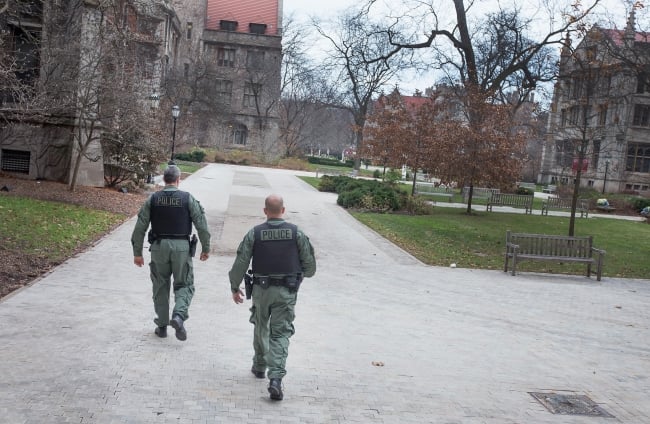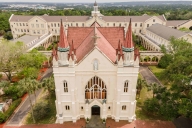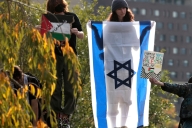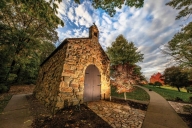You have /5 articles left.
Sign up for a free account or log in.

Police, shown here on the University of Chicago campus in 2015, have responded to at least 20 swatting attacks on college campuses over the past several weeks.
Scott Olson/Getty Images
There were a few red flags in the 911 call that alerted Metropolitan Police Department in Washington, D.C., of a supposed active shooter on the Catholic University of America’s campus. Rather than report a specific location, the caller vaguely mentioned a “computer lab.” And no other calls came in reporting the alleged attack.
The situation ended up being nothing more than an incident of “swatting,” shorthand for falsely reporting an act of violence in the hopes of getting a SWAT team to intervene. But despite the early warning signs that the call might be a hoax or a prank, it is far too risky for an institution to approach such episodes as anything other than a legitimate threat, Kirk McLean, Catholic’s associate vice president for public safety and emergency management, told Inside Higher Ed.
Similar alarm bells went off at Boston University when a caller reporting a campus shooting incorrectly identified the location as “the University of Boston.” But, as at Catholic, responders knew they couldn’t take a chance and proceeded as if the threat was real—though they eventually discovered it wasn’t.
“All we had at the moment was information to act on, and we took it very seriously … At the end of the day we’re so thankful that this wasn’t the real deal,” McLean said.
Swatting attacks at Catholic and Boston University were among at least 22 that have occurred at colleges and universities across the United States over the past several weeks, including two threats at Catholic universities in D.C. and eight at colleges in Texas. K-12 schools have also been the targets of a recent wave of swatting calls.
Not every call shared similarities with those at Catholic and BU; at Harvard, the swatter called three times, beginning at 3:23 a.m. on April 3. He claimed that he was holding a woman hostage in a specific room in a residential building; he also threatened to shoot any law enforcement officers who entered the room, and to come out of the room shooting. In the early-morning hours, armed campus police entered the room—only to find four Black students who were sleeping, and no hostage situation.
Harvard has drawn criticism for its handling of the situation.
The Harvard Black Alumni Society shared a post to its Facebook page, which read, “HBAS is horrified and upset that Black students at Harvard endured such trauma in their own homes, where they should have been assured the utmost safety.”
Harvard University Police Department chief Victor Clay later responded to concerns in a statement: “We acknowledge that the presence of police officers in the early morning hours in one of the College’s residential Houses can, and in this case did, raise fears and anxiety. Entering a residential House is not something that HUPD does without cause or takes lightly. The steps taken by HUPD are aligned with law enforcement protocols, which HUPD officers are trained on. The steps we take are based on an assessment of the level of potential threat to members of our community with regards to a potential public safety situation,” he wrote.
Investigating False Threats
Investigations into each of these incidents are currently underway, and it is too early to tell what may have motivated the calls or whether any of them are connected. Anonymous swatters are typically hard to identify, in part because modern technology allows them to mask their phone number when placing a 911 call.
Officials at the University of Oklahoma, which experienced a swatting call on April 7, told students and employees in an email that the call apparently originated outside the country.
“Although the investigation will continue for some time, it is believed that the calls targeting our campus originated from outside of the United States,” OU president Joseph Harroz Jr. wrote in the email, according to The Oklahoman. “Sadly, OU is not the only school to have recently been targeted by swatting, and it is deeply troubling there are people who want to purposely inflict such trauma and chaos.”
The FBI, which is involved in investigating these incidents, declined an interview request from Inside Higher Ed seeking comment on the potential goals of such campus attacks and whether they are connected. But a spokesperson acknowledged in an emailed statement that the agency is aware of the trend.
“The FBI takes swatting very seriously,” the statement read. “These threats put innocent people at risk and cause significant fear in the community. We have no information to indicate a specific and credible threat at this time, but we continue to collaborate with our law enforcement partners and are actively investigating these dangerous and criminal threats. Multiple agencies are working to gather and share information and respond to these threats with a shared goal of keeping the public safe. We urge the public to remain vigilant and report any and all suspicious activity and/or individuals to law enforcement immediately.”
Lauren R. Shapiro, an associate professor of security, fire and emergency management at John Jay College of Criminal Justice and the author of Cyberpredators and Their Prey (CRC Press, 2023), said swatting is often driven by callers trying to upset, embarrass or terrorize a specific target.
In attacks aimed more broadly at a college campus, she said, the caller may simply be attempting to pull a cruel prank, cause chaos or see their handiwork on the news.
“If you know you swatted a school and there’s a news story about it: ‘Look, I did that,’” she said. “I don’t mean to make jokes, but that’s really their mentality.”
Additionally, Shapiro said, it’s not unheard-of for a student to call in a false threat simply in the hopes of having a class or exam canceled.
Although swatting involves fabricating dangerous situations, it can produce actual danger when police or SWAT teams show up to address the purported threat. One person whose residence was targeted by swatters was killed by police in 2017, while another had a heart attack after police surrounded his house.
Campus Response
In most cases, the police respond to false reports in the same way they do to real ones, given that it is impossible at the outset to tell the difference with certainty. At Catholic, the campus community received a notification to shelter in place, with a note that the message was not a drill. Officials continued to update the campus on their progress in the search for the supposed shooter, McLean said, including sending out a notification when the police department brought in its helicopter.
After about an hour of searching—and having received no additional threats—Catholic and the MPD gave an all clear. McLean said he thought the university handled the situation well.
“As it stands right now, I feel confident that we did everything we should have done,” he said.
Boston University responded similarly, sending out a campus alert about the threat, securing buildings and eventually determining that there was no real danger, according to an article in BU Today, an institutional publication.
After a swatting incident, institutions often cancel classes for the rest of the day and direct students toward mental health resources. To students, the events can feel virtually indistinguishable from a real crisis, especially as legitimate instances of gun violence and mass shootings continue to rise around the country.
Following a recent swatting incident at Clemson University, one person commented on a Reddit post that the false alarm had only made them more concerned about real danger in the future.
“The thought keeps running through my head that it was a test for the real thing,” the user wrote. “And its [sic] making me terrified.”








